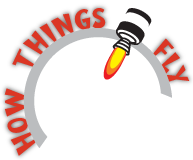Ask an Explainer
Q:
Is there any piston cylinder arrangement in a turbofan or turbojet engine?
A:
Jet engines (i.e. turbofan, turbojet, or turboprop engines) work without pistons when creating thrust. Piston engines generally power flight at slower speeds, and jet engines can help the aircraft go faster. Piston and jet engines are two of the three main types of engines that are used in flight. Thanks for the great question!

Posted on September 4, 2012 at 2:17 am
Categories:
